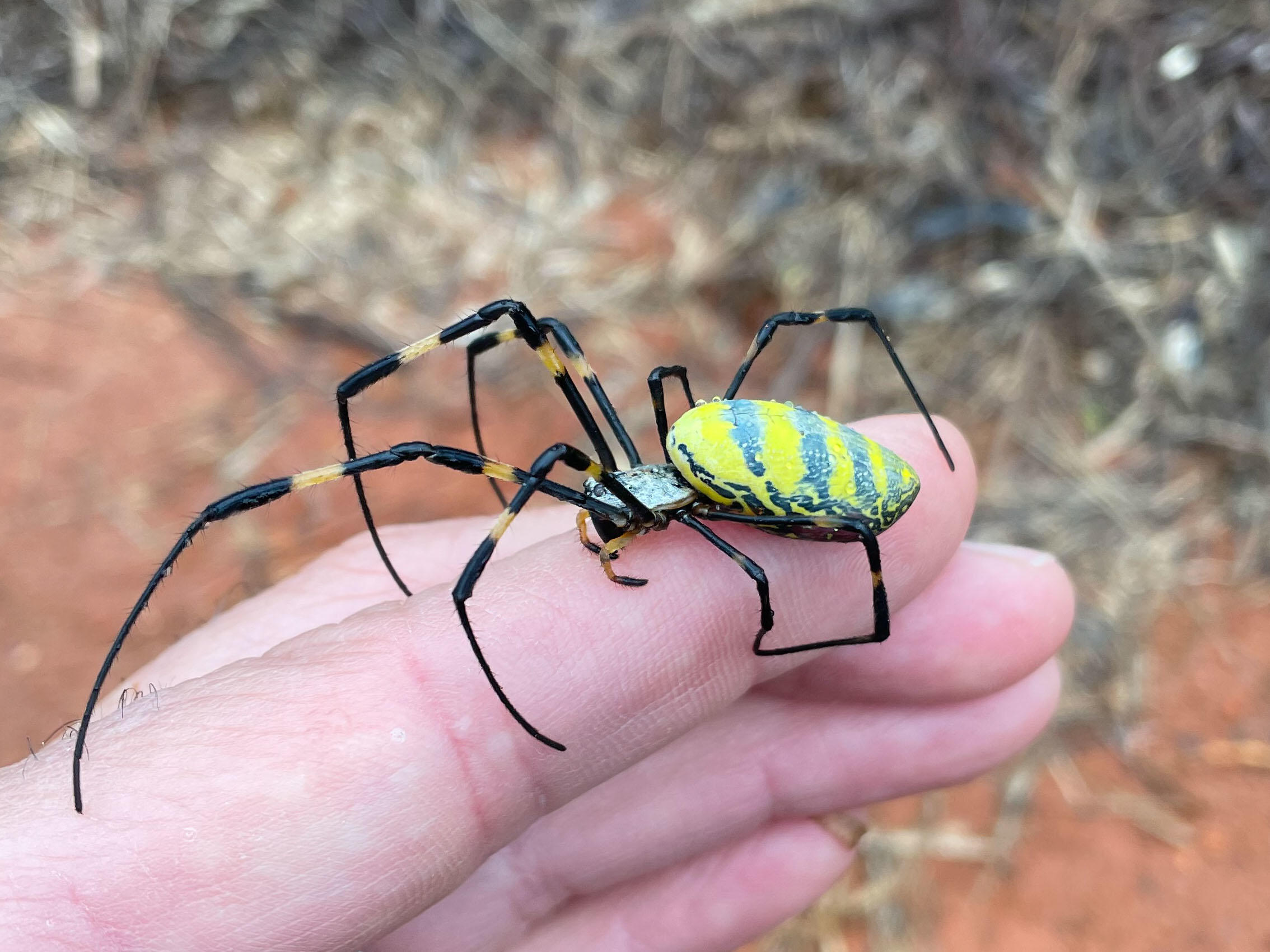
Giant Joro spiders can fly for miles and devour butterflies, but they’re also very shy. Here’s what to know as they spread.
You may have heard about some not-so-itsy-bitsy venomous flying spiders that can soar with the winds, love to eat butterflies and are already appearing along the East Coast. They’re called Joro spiders – and their lifestyle is just as interesting as their looks.
Perhaps the most intriguing part? Despite their ability to parachute through the air and their large size, researchers have found that they are actually super shy — in fact, they may be among the “‘shyest’ spiders ever documented,” according to a report published by the University of Georgia last year.
“We wanted to get to know the personality of these spiders and see if they’re capable of being that aggressive,” co-author Andy Davis said of the report’s findings. “It turns out they’re not.”
iNaturalist, the spiders have been seen in Alabama, Florida, Georgia, Kentucky, Mississippi, North Carolina, South Carolina, Tennessee, Virginia, West Virginia and Ohio.
“Data show that this spider is going to be able to inhabit most of the eastern U.S.,” Coyle said in October. “It shows that their comfort area in their native range matches up very well with much of North America. … We expect the range of these things to continue expanding, likely to the north, and we’ve already seen that with some populations in Maryland.”
Are Joro spiders poisonous to humans?
Technically, yes — but also no. Joro spiders are venomous, but they are not known to be aggressive and are much more scared of people than people are of them, which is really saying a lot.
“They are harmless to people and reluctant to bite,” Penn State Extension says. “And, if bites do occur, the venom is weak and not medically important.”
If a bite does happen, the organization added, it’s less painful than a bee sting, and any localized pain and redness would quickly resolve.
In a report published last year, researchers from the University of Georgia analyzed 450 spiders from 10 different species to study their responses to minor disturbances. They found that while most spiders will freeze for less than a minute before resuming activity, Joro spiders essentially “shut down” and won’t move for more than an hour. The only other spider to exhibit a similar behavior is the Joro’s cousin, the golden silk spider.
“These spiders are really more afraid of you than the reverse,” researcher Andy Davis said.
Even if they do get so afraid that they try to bite you, Davis’ team found that their fangs probably aren’t even large enough to bite through the skin.
Coyle said he’s held the spiders “on countless occasions,” as have his kids, and “there’s really no danger” posed to people or pets.
Dave Coyle/Clemson University
Should I kill Joro spiders?
Even though the spiders may make you squeamish and can appear quite scary, the arachnids are incredibly timid. Killing them, Coyle said, may not be necessary.
“Pesticides work, but also, they are probably overkill because it will kill everything else, and there is a cost involved,” he said, suggesting that the spiders be physically moved if they’ve crawled inside your house. “They seem to love structures. So, I just tell people to take a stick or broom and remove them.”
Davis has found in his research that while the spiders are an invasive species, they don’t yet seem to have greatly impacted local ecosystems. However, more research on this front is needed.
“People should try to learn to live with them,” he said. “If they’re literally in your way, I can see taking a web down and moving them to the side, but they’re just going to be back next year.”
Even the pest control service Orkin says that “moving them away from homes or removing their webs may be sufficient.”
How big are Joro spiders?
According to Penn State Extension, adult female Joro spiders have bodies up to an inch long and a leg span of up to four inches. For reference, the average length of a human female’s hand is 6.8 inches – meaning these spiders’ leg spans would take up most of an average woman’s hand.
Adult male Joro spiders are “much smaller,” PennState Extension said, with a body length just over a quarter of an inch. They also appear much more brown than females.
Even bigger than the spiders, however, are their webs. Coyle found some webs spanning more than six feet. There are reports that the webs can be up to 10 feet wide.
Can Joro spiders fly?
They might not have wings, but they do like to take to the skies, in a manner of speaking. It’s not “flying,” per se, but the arachnids use a technique called “ballooning” in which they release their silk into the wind and let the currents take them on an adventure.
According to Penn State Extension, spiderlings can move “tens to hundreds of miles” with this process, “so a storm blowing in the right direction at the right time of year may move them in large jumps.”
Li Cohen
Source: cbsnews.com